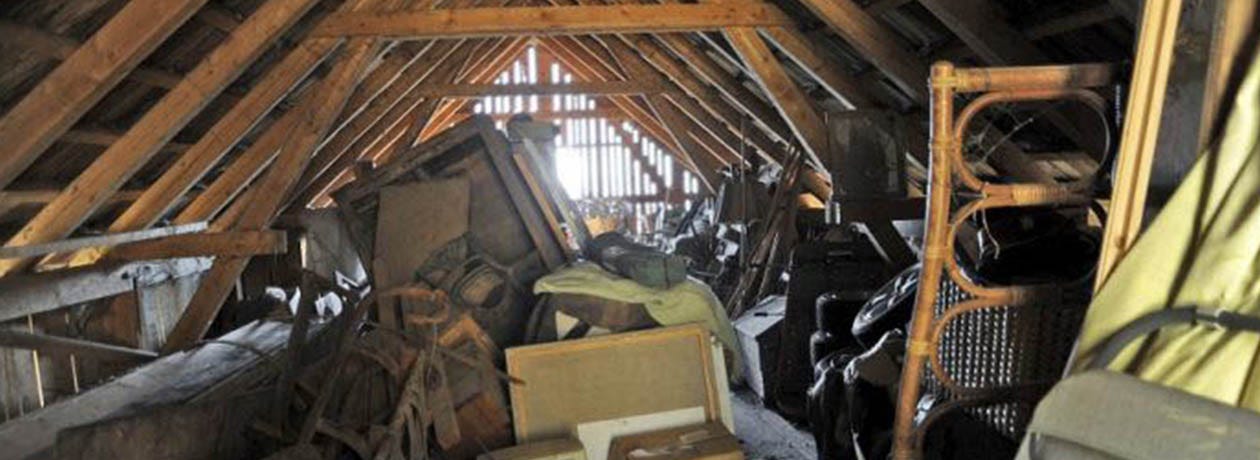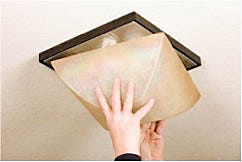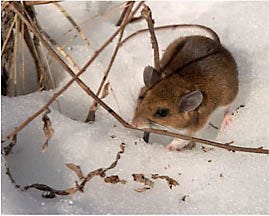Do I have Mice in My Attic?

Mice love living with humans. People provide mice safety, shelter, food and warmth – everything they need to thrive. Homeowners reluctantly accept the fact that mice will target their kitchens and pantries for food, but are often surprised when they show up elsewhere in a home.
One of the most surprising is when mice find their way into ceilings and attics. Since mice are excellent climbers, these spaces are actually very common infestation sites.
What to Listen For In an Attic and Ceiling
The first sign of mice in the ceiling or attic will be the sounds. There will be the sound of the skitter of their little claws across ceiling tiles or occasional squeaks. Gnawing and digging sounds are additional signs of an infestation. Since mice are nocturnal, these sounds will be most evident at night.
Since mice are active at night, the sounds they make inside the ceiling may be surprisingly loud. Unsurprisingly, they may jolt the homeowner awake!
Upon hearing these noises and confirming they come from the ceiling or attic, it’s best to do a visual inspection of the suspect areas.
What to Look for in an Attic and Ceiling
If a homeowner is lucky, they will have easy access to the attic and ceiling to check for a mouse invasion – many attics have staircases leading to them and some ceilings require nothing more than standing on a kitchen chair to get to them.
Other homeowners may need a ladder to reach access panels and hatches. For safety’s sake, make sure to have help holding the ladder during the investigation!

Once the area in question is confirmed, it’s time to begin the search. Here’s how:
- Attic: Whether we like to admit it or not, most attics are storage spaces. That means they are often dumping grounds for little-used household items. This creates a quiet area for mice to explore and nest. Look for all the typical signs of a mouse infestation – fecal pellets, stained pathways, tracks, hair, evidence of chewing and nesting material
- Finished Attic: An attic that’s been finished may also be the site of a mouse infestation because it is still likely to see only infrequent use, leaving mice the opportunity to go about their business undisturbed. Signs include the normal mice indicators: Droppings, stains and signs of gnawing. As a finished room, the mice will need an access point, so also hunt for any openings that may allow them into the room. Remember that since mice are great climbers, they may be entering the attic from outside the home through a wall vent, window or roof space.
- Finished Ceiling: If it is a finished ceiling that doesn’t permit a look inside, consider alternate access points to uncover mouse problems, including light fixtures, electrical outlets and vents. By dislodging these, the homeowner may be able to see inside the ceiling and spot any mouse activity. In extreme circumstances, cut a small hole in the ceiling and run a snake camera inside to look for signs of rodent infestation.
- Drop Ceiling: These ceilings are relatively easy to inspect and are also favorites of mice because we rarely disturb these ceilings and they are easy for mice to travel across. To check for mice, move one panel aside and bring a flashlight to inspect the rest of the ceiling. Look for droppings, evidence of chewing damage and nesting sites.
Getting Rid of Mice in the Attic
Once it is confirmed that there is a mouse problem in the attic, it is time to begin the process of removing the unwelcome guests. Since the attic is probably infrequently used, the area can likely be isolated from pets and children. Set out Victor® Easy Set® Mouse Traps every three feet around the perimeter walls of the attic. These traps are perfect for clean, quick, trapping of mice. The trap is pre-baited with a scented, expanded trigger and backed by more than 20 years of proven field results.
Any dead mice should be removed by wearing gloves and placing them in double-bagged plastic.
The traps should be reset every day until they are no longer catching mice
For homeowners that prefer a more humane, no-touch, no-see experience when capturing mice, look no further than the Victor® Multi-Kill™ Electronic Mouse Trap. This easy-to-use trap uses a high-voltage shock to kill mice in seconds. More efficient than traditional single-mouse snap traps, the Multi-Kill™ can kill up to ten mice per setting and up to 150 mice per set of four “C” batteries, with a 100% kill rate.
To deter mice from returning, any access points should be sealed up. Also, we recommend investing in a mouse repellent, such as the Victor® PestChaser® PRO Rodent Repeller. This heavy-duty ultrasonic broadcaster has been proven to drive mice out of an area, with more than 2X the power output of standard ultrasonic pest control units.
Getting Rid of Mice in the Ceiling
If the mouse problem is inside a drop ceiling, remove tiles near the perimeter of the ceiling and add Victor® Hold-Fast glue trays. Their low profiles make them easy to use in the tight spaces. Check the traps daily and dispose of any that catch mice.

For finished ceilings, the best bet is to determine where the mice are actually gaining entrance to the inside of the home and then place outdoor traps around that area. After all, the mice need to have something to eat, so leaving the area each day is a necessity.
If an investigation doesn’t reveal any typical entry areas, then access the ceiling and add glue trays. Check the trays regularly for catches. After a few weeks, replace the trays with Victor’s Scent-Away™ Repeller Drops, which should keep mice from returning.
Victor® Solutions to a Mouse Problem
Whether there are mice in the attic, ceiling or anywhere else, Victor® has a solution for ridding homeowners or their toughest pest problems.
